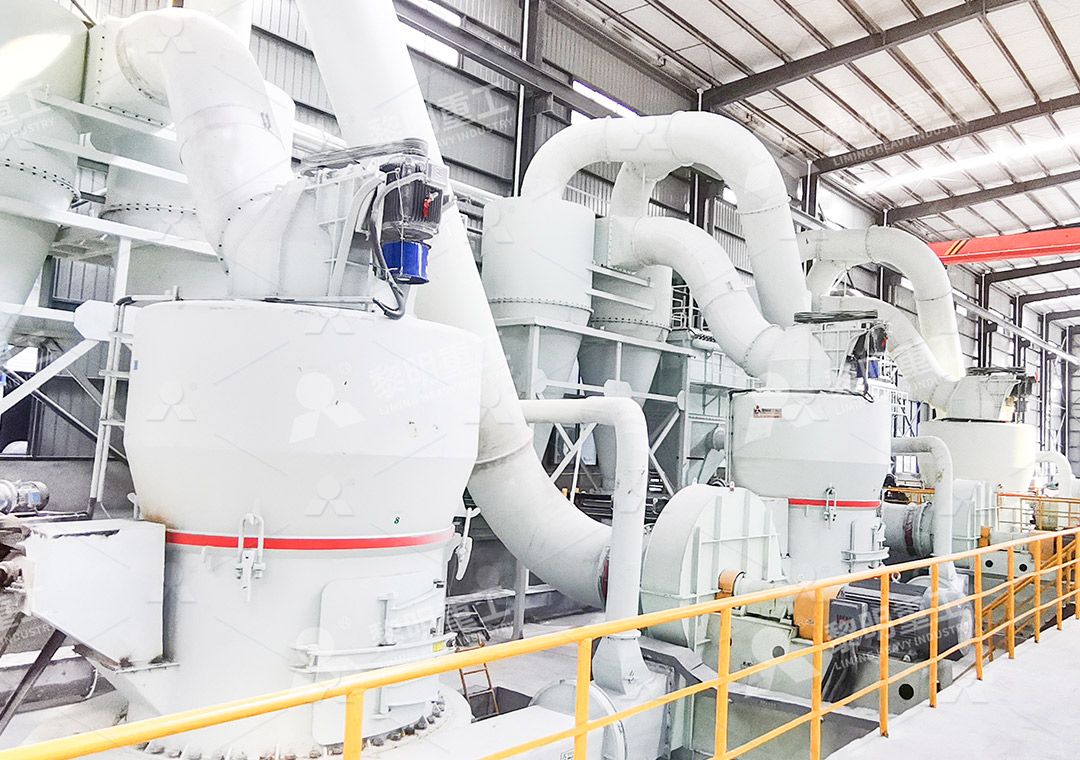Gangue Grinding Mill: A Key Equipment for Eco-Friendly Building Materials Production
We provide a wide range of mills — including Raymond mill, trapezoidal mill, vertical mill, ultrafine mill, and ball mill, obtained ISO9001 international quality certification, EU CE certification, and Customs Union CU-TR certification. Suitable for processing minerals such as limestone, phosphate, quicklime, kaolin, talc, barite, bentonite, calcium carbonate, dolomite, coal, gypsum, clay, carbon black, slag, cement raw materials, cement clinker, and more.
The discharge range of these mills can be adjusted to meet specific processing needs, typically from 80-400 mesh, 600-3250 mesh, and can achieve the finest particle size of up to 6000 mesh(D50).
If you are looking for a reliable grinding solution to turn stone or minerals into fine powder, please feel free to contact our online customer service.
Transforming Waste into Value: The Role of Advanced Grinding Technology
The construction industry faces increasing pressure to adopt sustainable practices, and one promising approach involves converting industrial by-products like gangue into valuable building materials. Gangue, the waste rock associated with mining operations, has traditionally been discarded in landfills, creating environmental challenges. However, with advanced grinding technology, this waste material can be transformed into high-quality powders for eco-friendly construction applications.

The Technical Challenge of Gangue Processing
Processing gangue presents unique challenges due to its variable composition and hardness. Traditional grinding mills often struggle with inconsistent feed materials and require excessive energy consumption. The ideal solution must offer flexibility in handling different gangue types while maintaining precise control over particle size distribution – a critical factor for downstream building material applications.
After extensive research and field testing, our engineering team has identified that ultrafine grinding technology provides the most effective solution for gangue processing. The ability to produce powders with controlled fineness between 325-2500 meshes enables manufacturers to create specialized building materials with enhanced properties.
Recommended Solution: MW Ultrafine Grinding Mill
For operations focused on producing high-value building materials from gangue, we specifically recommend the MW Ultrafine Grinding Mill. This system represents a significant advancement in grinding technology, offering several critical advantages for sustainable material production:
- Superior Efficiency: With capacity ranging from 0.5-25 tph and the ability to handle input sizes up to 20 mm, the MW Mill achieves 40% higher production capacity compared to conventional jet mills while reducing energy consumption by 30%.
- Precision Control: The German-designed cage-type powder selector allows precise adjustment of fineness between 325-2500 meshes, ensuring consistent quality for building material applications.
- Environmental Compliance: Integrated pulse dust collectors and mufflers maintain dust emissions and noise levels well below regulatory requirements.

Advanced Features for Sustainable Operation
The MW Ultrafine Grinding Mill incorporates several innovative design features that make it particularly suitable for eco-friendly building material production. The absence of rolling bearings and screws in the grinding chamber eliminates common failure points and reduces maintenance requirements. The external lubrication system enables continuous 24-hour operation without shutdowns for maintenance.
For larger-scale operations requiring even greater efficiency, the LUM Ultrafine Vertical Grinding Mill offers additional advantages. With capacity up to 18 tph and input size handling up to 10 mm, the LUM system features unique roller shell and lining plate grinding curves that optimize material layer formation and improve finished product whiteness and cleanliness.
Real-World Applications and Benefits
Operations utilizing these advanced grinding systems report significant benefits in their building material production lines. The consistent particle size distribution enables better control over material properties in final products such as:
- Geopolymer cement substitutes
- Lightweight aggregate materials
- Specialty concrete additives
- Eco-friendly brick and tile compositions
The environmental benefits extend beyond waste utilization. These grinding systems operate with significantly lower carbon footprints compared to traditional processing methods, contributing to LEED certification and other sustainability metrics for construction projects.

Frequently Asked Questions
What makes gangue suitable for building material production?
Gangue contains mineral compositions that, when properly processed to specific fineness levels, can exhibit pozzolanic properties similar to traditional cementitious materials. The controlled grinding process activates these properties, creating valuable additives for construction applications.
How does the MW Ultrafine Grinding Mill handle variable gangue composition?
The mill’s adjustable grinding parameters and advanced separation technology allow operators to fine-tune the process for different gangue types. The hydraulic adjustment system and variable-speed drives provide the flexibility needed to maintain product consistency despite feed variations.
What environmental certifications do these grinding systems support?
Our grinding mills are designed to help producers achieve multiple environmental certifications, including LEED points for recycled content, industrial ecology compliance, and carbon footprint reduction. The systems themselves meet ISO 14001 environmental management standards.
Can these systems integrate with existing building material production lines?
Yes, both the MW and LUM grinding mills are designed for seamless integration with existing operations. Our engineering team provides comprehensive support for system integration, including material handling, dust collection, and automated control interfaces.
What maintenance requirements should operators expect?
The maintenance requirements are significantly reduced compared to traditional mills. The absence of internal bearings and screws, combined with external lubrication systems, means most maintenance can be performed without production stoppages. Typical maintenance intervals exceed 8,000 operating hours for major components.
